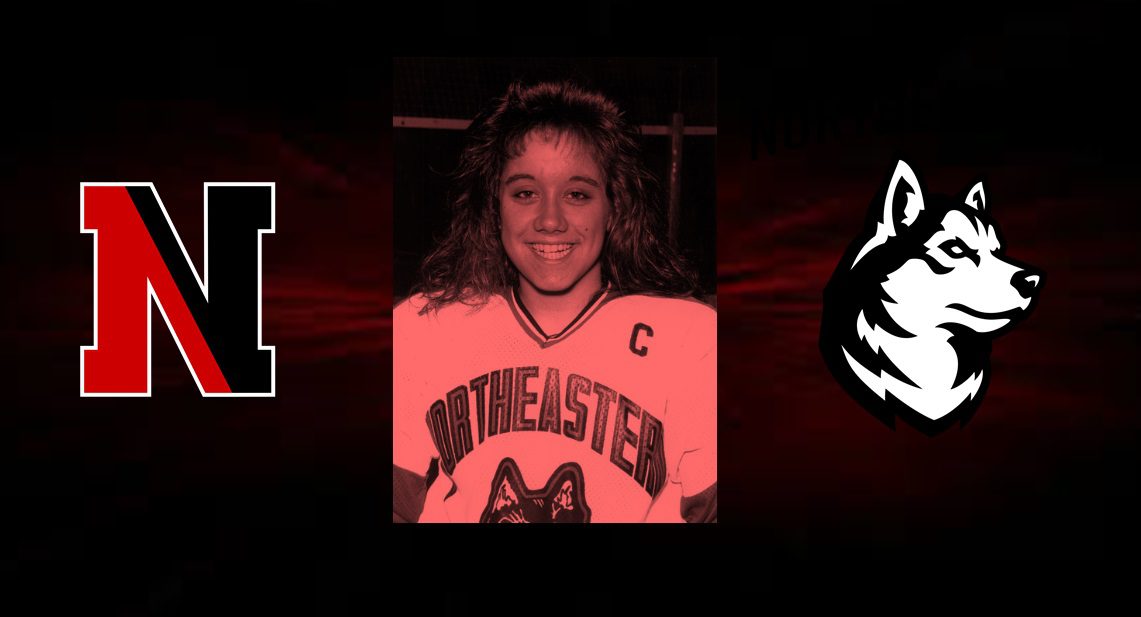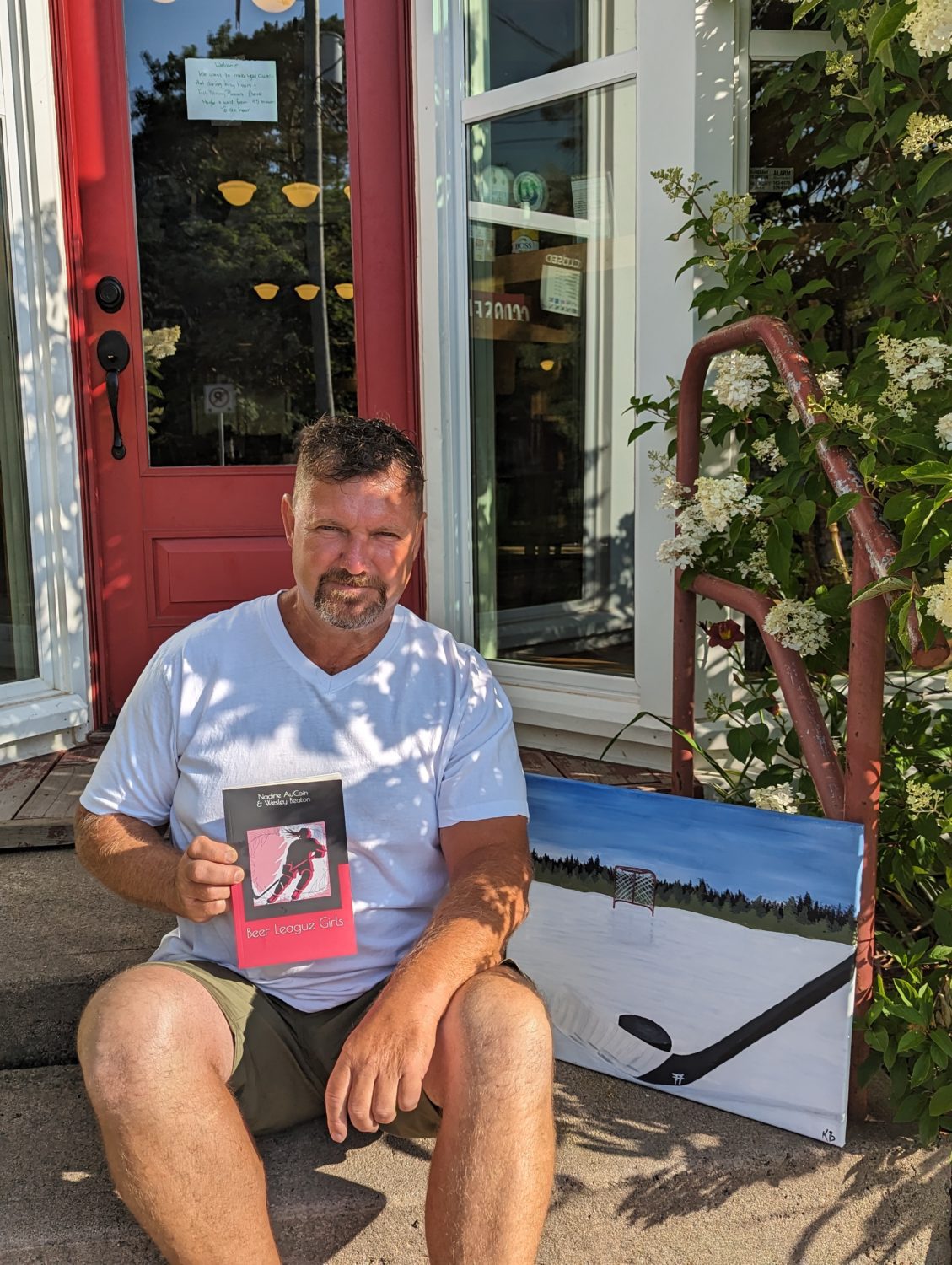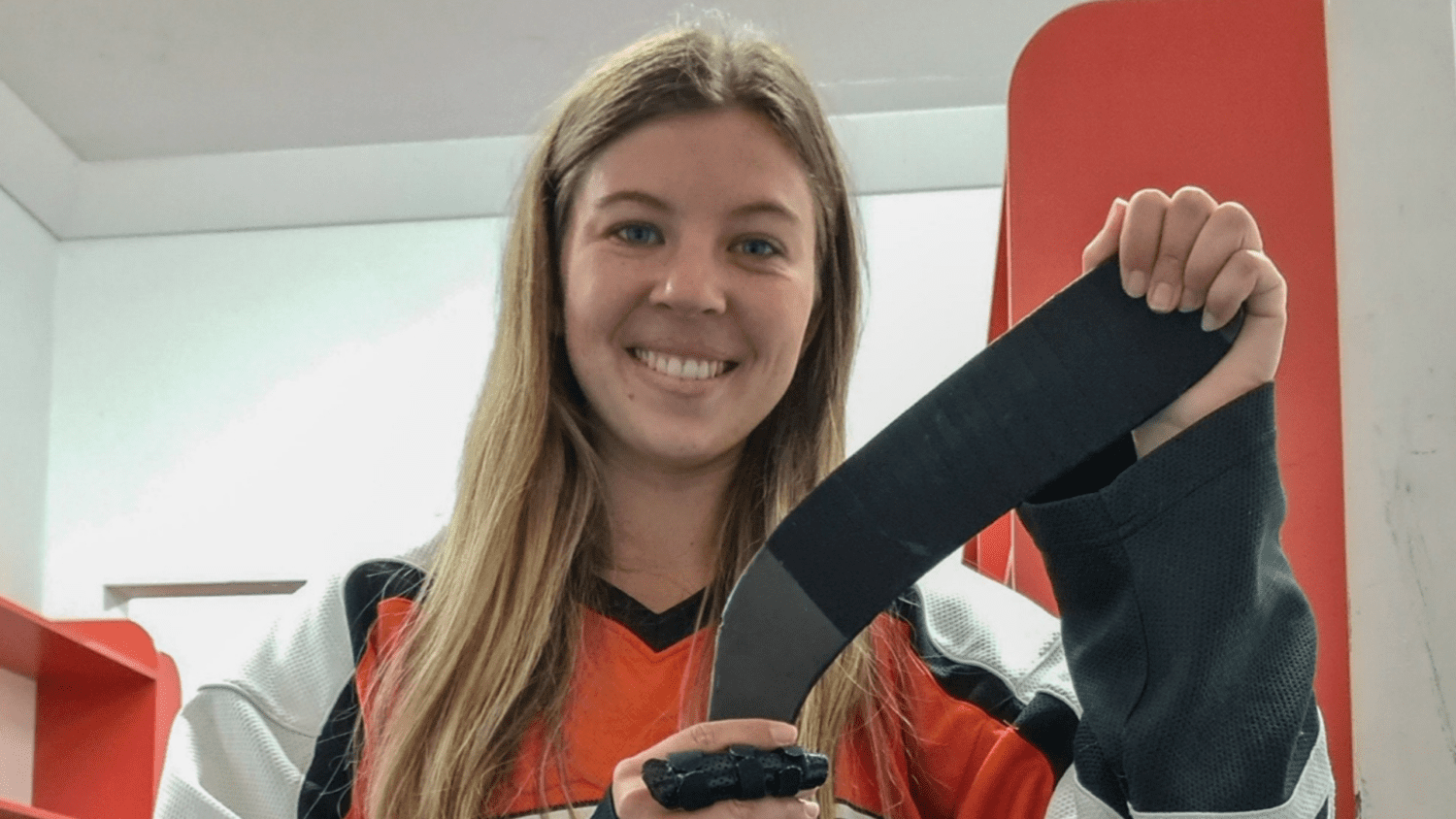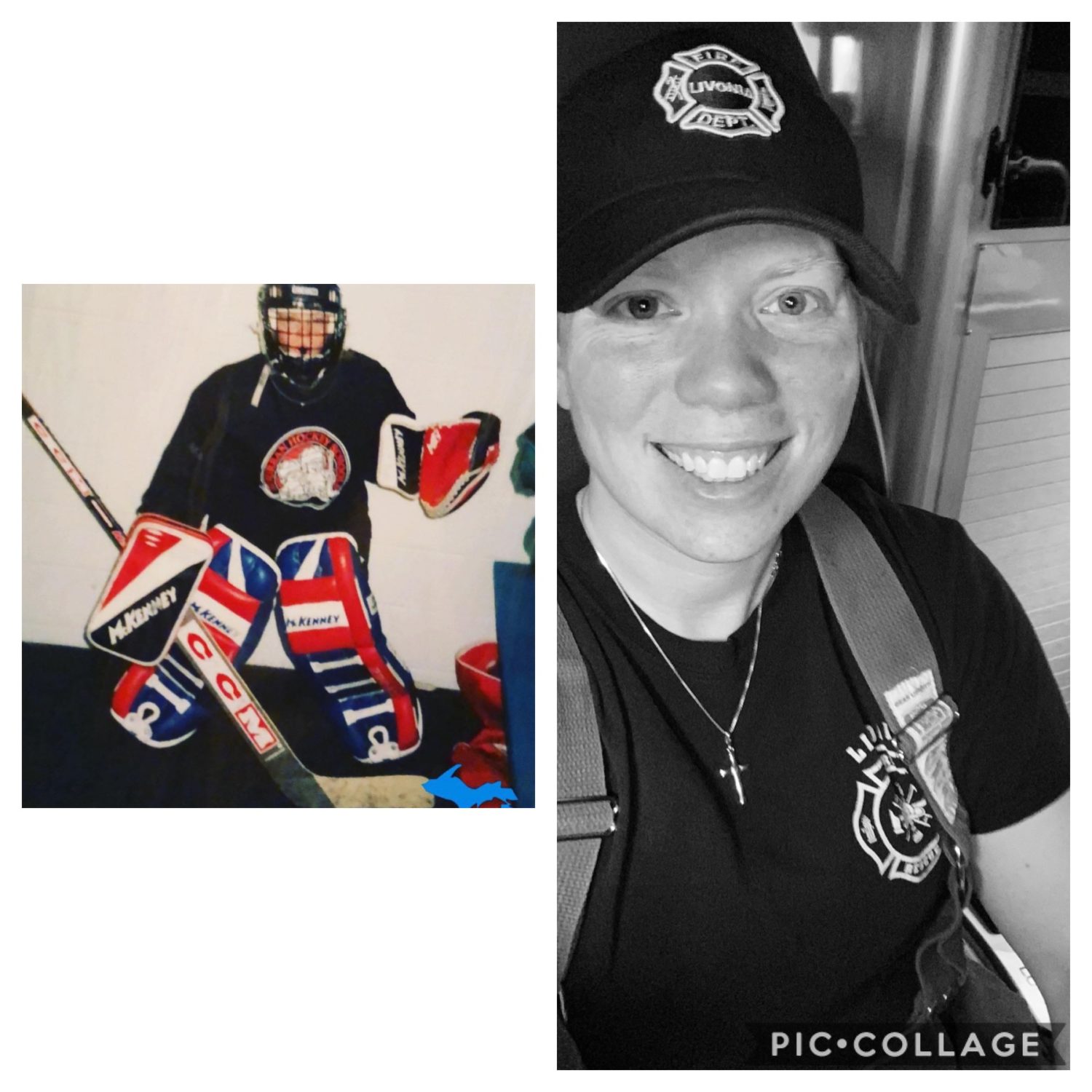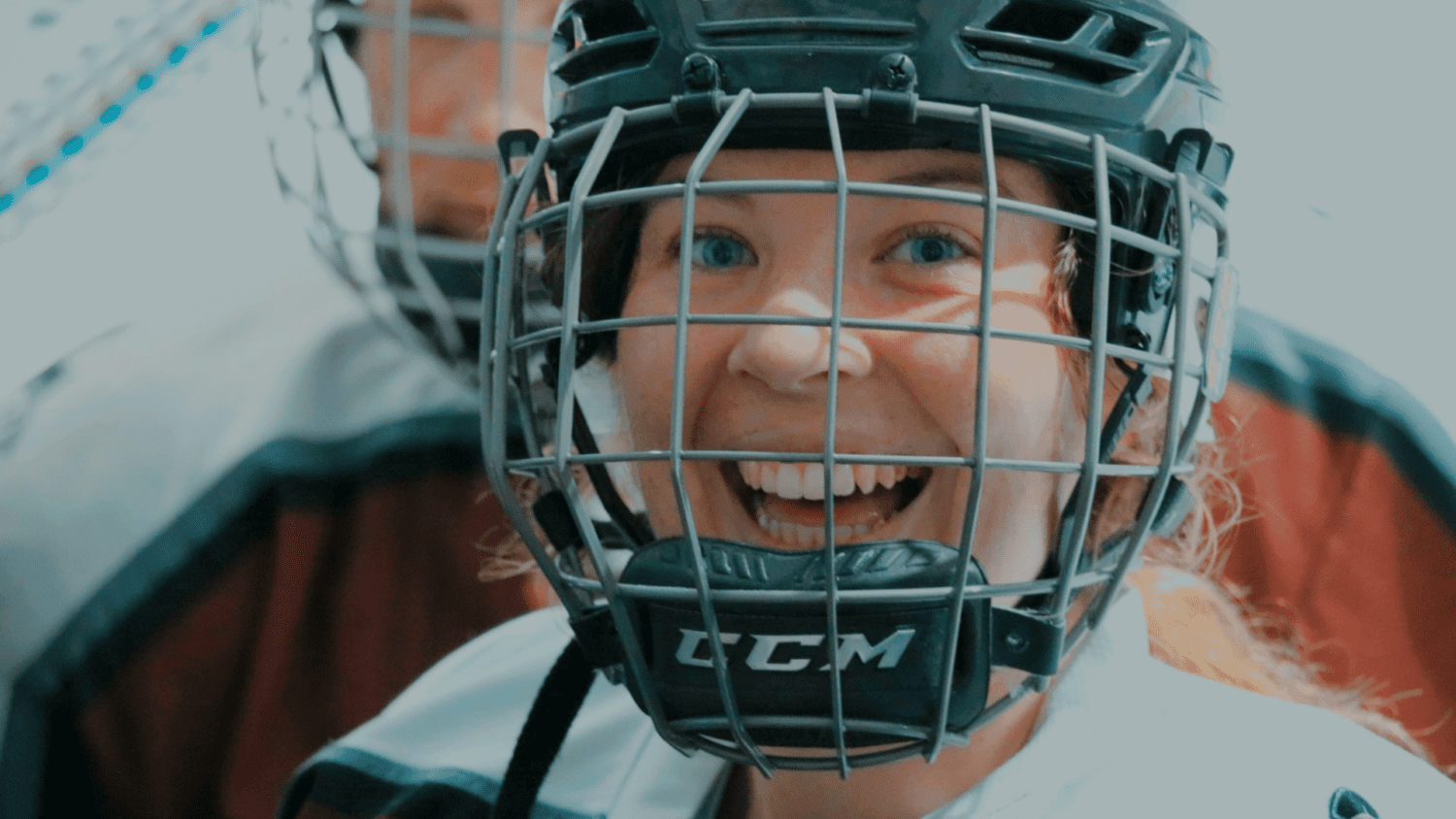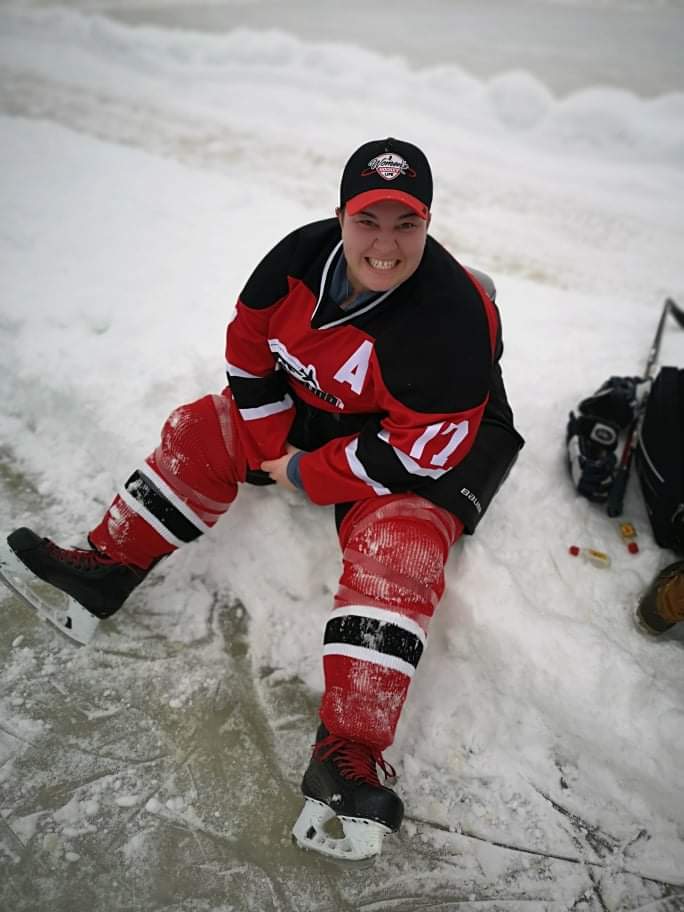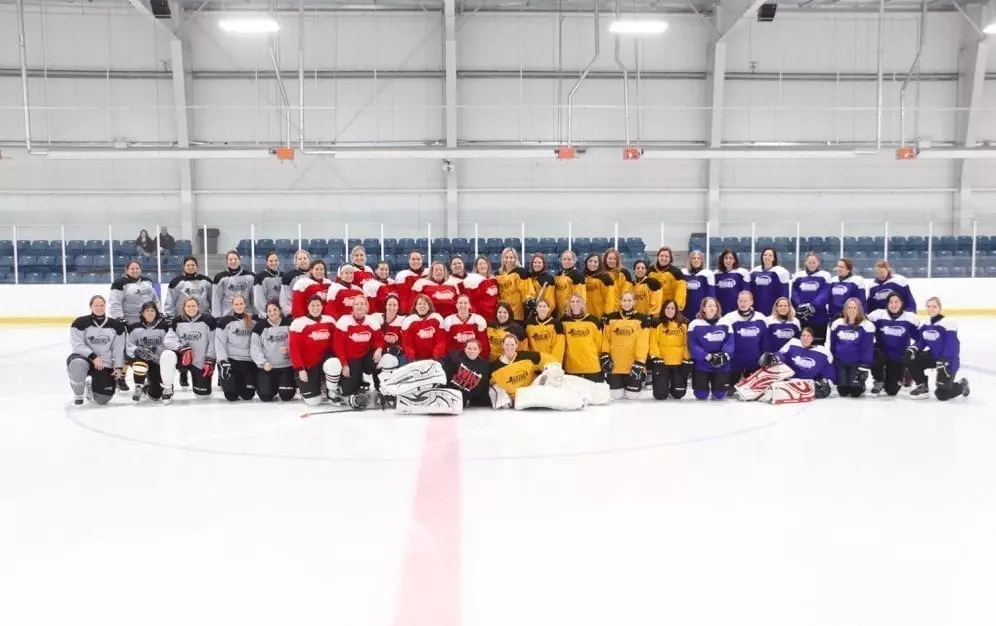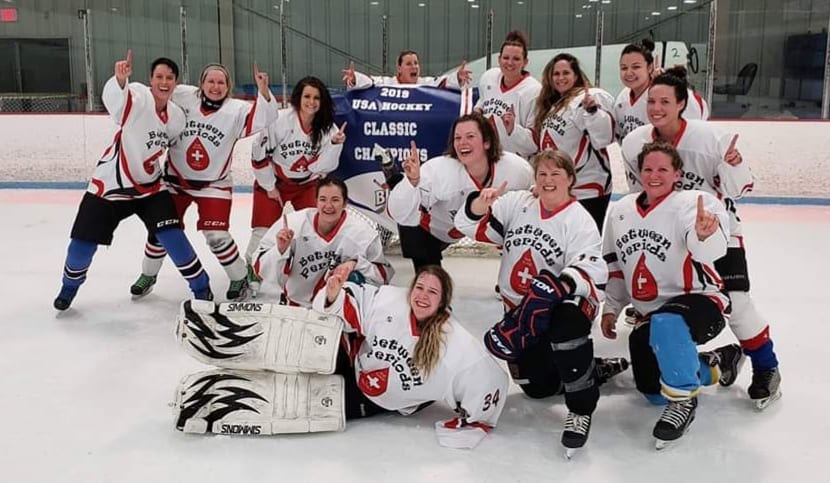
Breast cancer always had been on the outside for me. I had heard of it of course. It claimed the life of my Grade 1 teacher, but I was too young to understand it then. I participated in Run for the Cure each year to show my support for the thousands of women battling the disease. I taped my goalie pads and stick pink each October as another way to show my support. But I didn’t think much of it. It wasn’t personal. Breast cancer always had been on the outside for me – until August 2014.
That’s when my grandma – my best friend and already the strongest woman I know – was diagnosed with Stage 4 breast cancer. From then on, everything changed. The pink on my hockey equipment is not there just to support some strangers anymore. My grandma is in the fight of her life and I am right there beside her. Breast cancer is now on the inside for me.
Pink in the Rink has become a tradition for many hockey teams as they drop the gloves in the fight against breast cancer. Awareness of the disease is spread each October through everything from pink stick tape to pink ice. While everyone looks pretty in pink, millions of dollars are raised for the cause. It’s one of the ways the hockey community gives back to all the hockey moms whose tireless efforts make playing the game possible.
One in eight Canadian women will develop breast cancer in their lifetime. In 2017, an average of 72 Canadian women were diagnosed with breast cancer each day.
For me Pink in the Rink is personal. After her mastectomy, my grandma was in pain. That was not the grandma I knew. My grandma was always full of energy, always moving and always had a smile on her face. She was the happiest person in every room. For the first time in my life, I saw my grandma show weakness.
For reasons I still don’t understand, I hid the fact my grandma was sick from others. I didn’t tell any of my friends. I was lying to them constantly. They thought I was a bad friend for missing birthday dinners and other commitments. The truth, though, is I was spending every possible minute with my grandma. I think hiding it from the people was my way of making it seem less real.
Things were rough at home. My mom was still grumpy all the time. My younger siblings had no extra cheer. My grandpa was worried sick. But, my grandma – my grandma was our strength. She was in pain, but still smiling. She was the one who wanted to go out and do things. She insisted on cooking Christmas dinner for the family. She was the strongest of all of us.
Through my grandma’s experience, I learned that support makes a difference. The simplest things, such as a quilt made by her friends, brought her so much comfort while she was in pain.
It made Pink in the Rink more meaningful to me.
Hockey teams of all skill levels and age groups in Edmonton have participated in Pink in the Rink.
Athletes from the Maple Leaf Athletic Club, a minor hockey program, did their first Pink in the Rink in 2016. All bantam AA, minor midget AAA and midget AA teams participated, raising money for the Alberta Cancer Foundation. The players wore special edition pink MLAC jerseys and taped their sticks pink. The Sherwood Park Crusaders in the Alberta Junior Hockey League started participating in Pink in the Rink in 2017, with pink jerseys for auction, pink stick tape and pink laces. The Western Hockey League’s Edmonton Oil Kings started participating in Pink at the Rink in 2013. The players used pink laces, pink tape and wore pink jerseys. The sticks and jerseys were auctioned off to raise money. From 2013 to 2016 the Oil Kings Pink at the Rink raised more $135, 000 for local charities, including Sorrentino’s Compassion House, the Alberta Cancer Foundation and the Canadian Breast Cancer Foundation.
Pink in the Rink is a way of giving back to the community. It is a way for hockey players to show support for all those affected by the disease. Often those affected are women in the players’ lives–moms, grandmas, sisters, aunties–people who helped players build their careers. They took them to rink at 6 a.m. and never missed a game. They were the ones who inspired players to do their best.
My grandma is my biggest supporter when it comes to hockey. She doesn’t care about the score or how well I played. She only cares if I tried my best and had fun. My grandma will go to a game and have a blast and be proud of me no matter the outcome.
When October rolls around, my hockey team tries to do our part and flash the pink. We don’t raise money, but we show support. I make sure my grandma comes to my games and sees me and my whole team decked out in pink. It’s my chance to say thank you to her and all the others who are struggling with breast cancer because, through their struggles, they inspire me. It’s just a gesture, but I hope it means something to them.
Once breast cancer was on the inside for me, the fundraisers done by hockey teams meant so much more. I realized they were about more than raising money.
Breast cancer is on the inside now. It is a reality. It is a battle I watch my grandma fight every day. I still don’t understand it fully, but I continue to show my support. I think about how my actions have an impact. It is personal now. I still tape my pads and stick pink, but I do it for my grandma. Breast cancer is on the inside now.
[adrotate group=”1″]
Related Articles
Categories
Recent Posts
[adrotate group=”2″]

